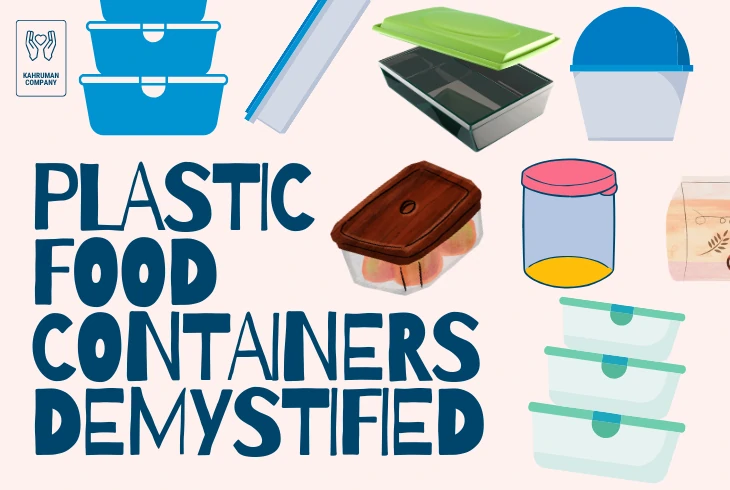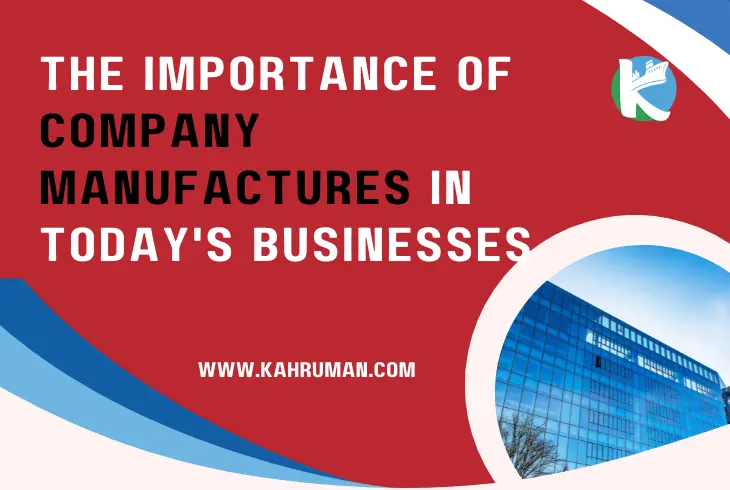Companies must respond to customer demands quickly and efficiently in today's fast-paced business world. One of the key ways to achieve this is through integrated logistics. Integrated logistics involves coordinating and integrating all activities involved in moving goods and services, from raw materials to finished products, across the entire supply chain. In this article, we will explore the different aspects of integrated logistics, from its definition and flow to its importance, components, and different types of Integration. We will also examine the relationship between integrated logistics and supply chain management and discuss the three levels of logistics integration. Additionally, we will begin by discussing the four types of logistics to establish a clear understanding of logistics as a whole. Let's dive in!
What are the 4 types of logistics?
Four types of logistics are essential to the movement of goods and services in today's global market.
Firstly, inbound logistics involves transporting and storing raw materials and goods from suppliers to manufacturers.
Secondly, outbound logistics moves finished products from manufacturers to customers or distributors.
Thirdly, reverse logistics involves returning goods from the customer to the manufacturer, for example, when a product is defective or needs to be repaired.
Internal logistics involves moving and storing goods within a company's facilities, including inventory management, packaging, and transportation.
Each type of logistics plays a crucial role in the overall supply chain, and understanding them is essential for businesses to optimize their operations and improve their bottom line.
What does integrated logistics mean?
Integrated logistics, or integrated supply chain management, is a holistic approach to managing the flow of goods and services across the entire supply chain. It involves coordinating and integrating all the activities involved in the movement of products, from raw materials to finished goods, including transportation, warehousing, inventory management, and order processing.
Targeted goal of integrated logistics
The goal of integrated logistics is to optimize the efficiency and effectiveness of the supply chain by minimizing costs, reducing lead times, improving quality, and enhancing customer satisfaction. This approach emphasizes collaboration and communication between different company functions, stakeholders, and external partners such as suppliers, customers, and logistics service providers.
Ultimately, integrated logistics aims to provide end-to-end visibility and control over the supply chain, enabling companies to respond quickly and proactively to changes in demand and market conditions.
What is the flow of integrated logistics?
The flow of integrated logistics can be described as a seamless and synchronized process that involves the movement of products from suppliers to customers while minimizing costs, maximizing efficiency, and meeting customer expectations. This process typically starts with demand planning and forecasting, which helps companies determine what products and how much to produce or purchase from suppliers. Once the demand is established, the procurement process begins, where suppliers are selected, orders are placed, and raw materials or finished goods are transported to the company's facilities.
Once the products are received, they are stored in warehouses, where inventory management systems track the movement and levels of stock. This is followed by the order fulfillment process, where customer orders are processed, picked, packed, and shipped. Transportation plays a critical role in the flow of integrated logistics, as it involves the movement of goods from one location to another, whether between facilities within the same company or from the manufacturer to the customer.
Throughout this process, information flows are crucial in ensuring that all stakeholders are informed and updated on the status of the products and the supply chain. These information flows involve the exchange of data and communication between different functions and systems, such as enterprise resource planning (ERP) systems, warehouse management systems (WMS), and transportation management systems (TMS).
In summary, the flow of integrated logistics involves a series of interrelated and coordinated processes encompassing everything from demand planning and procurement to warehousing, order fulfillment, and transportation, focusing on optimizing efficiency, reducing costs, and meeting customer needs.
What is the importance of integrated logistics?
Integrated logistics is important for several reasons, including:
Improved Efficiency:
By integrating all aspects of the supply chain, integrated logistics can help companies streamline their operations, reduce lead times, and optimize their processes. This can lead to significant cost savings and improved productivity.
Enhanced Customer Service:
Integrated logistics can help companies provide better customer service by enabling them to respond quickly and accurately to customer demands and preferences. Enhanced Customer Service can help improve customer satisfaction and loyalty.
Increased Visibility:
Integrated logistics provides end-to-end visibility and control over the supply chain, which can help companies identify and mitigate risks, such as supply chain disruptions, quality issues, or inventory shortages.
Competitive Advantage:
Companies that implement integrated logistics strategies can gain a competitive advantage by differentiating themselves from their competitors and offering superior service and value to their customers.
Sustainability:
Integrated logistics can help companies reduce their environmental impact by optimizing transportation routes, reducing waste, and promoting sustainable practices throughout the supply chain.
In summary, integrated logistics is important because it can help companies improve efficiency, enhance customer service, increase visibility, gain a competitive advantage, and promote sustainability. By leveraging the power of Integration, companies can achieve greater success in today's complex and competitive business environment.
Read our Articale about: Economy Shipping
What are the components of integrated logistics?
The components of integrated logistics can vary depending on the specific needs and requirements of a company, but some common components include:
Transportation:
Transportation is a critical component of integrated logistics, as it involves the movement of goods from one location to another, whether between facilities within the same company or from the manufacturer to the customer. Transportation includes the selection of transportation modes, carriers, and routes, as well as the management of freight and logistics service providers.
Warehousing:
Warehousing involves the storage and management of inventory, including raw materials, work-in-progress, and finished goods. This includes the design and layout of warehouses, inventory management systems, and handling and distributing goods.
Inventory Management:
Inventory management involves planning and controlling inventory levels to ensure that products are available when and where they are needed. This includes forecasting demand, determining safety stock levels, managing replenishment, and monitoring inventory.
Order Processing:
Order processing involves the management of customer orders, from receipt to delivery. This includes capturing orders, picking, packing, shipping, and managing returns and exchanges.
Information Systems:
Information systems are critical components of integrated logistics, as they enable the exchange of data and information between different functions and systems, such as enterprise resource planning (ERP) systems, warehouse management systems (WMS), and transportation management systems (TMS). These systems provide real-time visibility and control over the supply chain, enabling companies to respond quickly and proactively to changes in demand and market conditions.
Supply Chain Partnerships:
Integrated logistics involves collaboration and partnership with suppliers, customers, and logistics service providers to optimize the flow of goods and services across the supply chain. This includes sharing information, resources, and expertise to achieve common goals and objectives.
In summary, the components of integrated logistics include transportation, warehousing, inventory management, order processing, information systems, and supply chain partnerships. By integrating these components, companies can optimize their supply chain and improve their overall performance and competitiveness.
difference between integrated logistics and supply chain
Integrated logistics and supply chain management are related concepts, but they are different. Here are some key differences:
Scope:
Supply chain management encompasses more activities than integrated logistics. Supply chain management includes all activities involved in sourcing, procurement, production, transportation, warehousing, inventory management, and customer service. Integrated logistics, on the other hand, focuses specifically on the management of logistics activities such as transportation, warehousing, and order processing.
Focus:
The focus of integrated logistics is primarily on efficient and effective movement and storage of goods, while supply chain management focuses on coordinating and optimizing all activities involved in delivering products and services to customers.
Level of Integration:
Integrated logistics is a component of supply chain management, as it involves the Integration of logistics activities with other supply chain functions such as procurement, production, and customer service. However, supply chain management goes beyond logistics integration to encompass the Integration of all supply chain functions and partners.
Strategic Orientation:
Supply chain management is a strategic approach to managing the entire supply chain to achieve a competitive advantage. At the same time, integrated logistics is a tactical approach focused on optimizing logistics operations for efficiency and cost savings.
In summary, while integrated logistics is a key component of supply chain management, they are different. Integrated logistics focuses on managing logistics such as transportation, warehousing, and order processing. In contrast, supply chain management encompasses all activities involved in delivering products and services to customers, with a strategic orientation to achieve competitive advantage.
Different types of Integration in logistics
there are different types of Integration in logistics, including:
Internal Integration:
This refers to the Integration of different functions and departments within a company, such as logistics, procurement, production, and sales. By integrating these functions, companies can achieve greater efficiency and coordination.
External Integration
refers to integrating a company's logistics operations with its suppliers and customers. This can involve collaboration with suppliers to improve the flow of materials and components or with customers to improve the delivery of products and services.
Horizontal Integration:
This refers to the Integration of logistics operations across different companies or organizations, such as through partnerships or alliances. This can enable companies to achieve economies of scale, share resources and expertise, and improve overall performance.
Vertical Integration
refers to the Integration of logistics operations along the supply chain, from raw materials to finished products. This can involve the Integration of logistics functions such as transportation, warehousing, and inventory management, as well as the Integration of production and distribution activities.
Information Integration:
This refers to integrating information and data across different functions and systems within a company and with external partners. This can enable companies to improve visibility and control over their operations and to respond quickly and proactively to changes in demand and market conditions.
Different types of logistics integration can help companies achieve greater efficiency, coordination, and competitiveness in their operations, whether through internal Integration, external Integration, Horizontal Integration, Vertical Integration, or information integration.
The Three levels of logistics integration
Strategic Integration:
This involves aligning the logistics strategy with the overall business strategy. It includes developing long-term plans and objectives for logistics operations aligned with the company's overall goals and objectives. Strategic Integration also involves identifying and evaluating logistics opportunities and risks that could impact the company's overall performance.
Tactical Integration:
This involves coordinating logistics activities and processes to ensure efficient and effective delivery of products and services. It includes the planning and execution of logistics operations, such as transportation, warehousing, and inventory management. Tactical Integration also involves optimizing logistics processes to improve efficiency, reduce costs, and enhance customer service.
Operational Integration:
This involves integrating logistics activities and processes across different functions and systems within the company, as well as with external partners. It includes using information technology systems and tools to facilitate communication, collaboration, and data sharing among logistics stakeholders. Operational Integration also involves continuously monitoring and improving logistics operations to ensure that they align with the company's overall goals and objectives.
The three levels of logistics integration - strategic, tactical, and operational - are essential for companies to achieve effective and efficient logistics operations aligned with their overall business strategy and objectives.
In conclusion, integrated logistics is a concept that involves the seamless coordination and Integration of logistics activities and processes within an organization, as well as with external partners such as suppliers and customers. Companies can achieve greater efficiency, cost-effectiveness, and customer satisfaction by adopting an integrated logistics model. Integrated logistics solutions can support a company's overall business strategy and objectives by offering technical and engineering support, sustainment, and logistics solutions tailored to the organization's specific needs. The success of integrated logistics operations depends on careful planning, execution, and continuous improvement. As a defined and cited provider of logistics services and solutions, integrated logistics can help organizations to achieve a competitive advantage and sustain long-term success in today's complex and dynamic business environment










